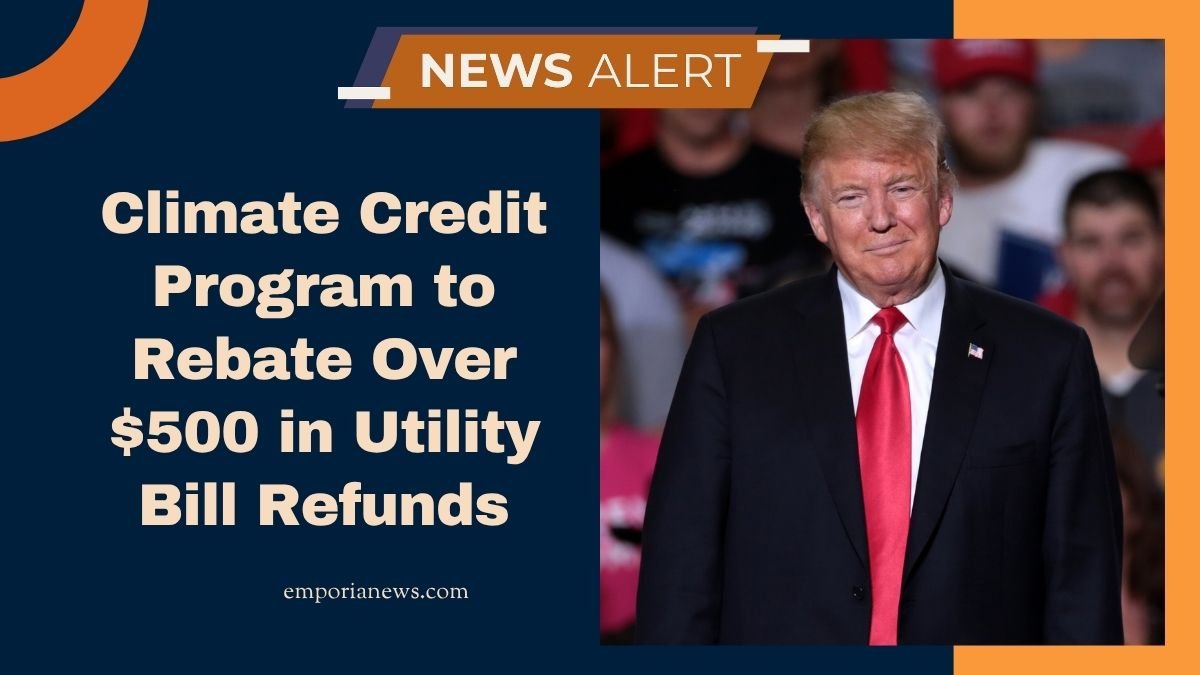In 2025, many California households will benefit from the California Climate Credit, a rebate program that returns funds to utility customers as part of the state’s Cap-and-Trade climate strategy.
Instead of being a standard tax refund, this credit is applied directly to electricity and gas bills. For some households, rebates can add up to more than $500 annually.
What Is the California Climate Credit?
The California Climate Credit is a mechanism by which revenue from the state’s Cap-and-Trade system is redistributed to residents and some small businesses.
Under the Cap-and-Trade program, large polluters must buy emission allowances, and a portion of those auction proceeds is returned to utility customers via these climate credits.
Key features:
- Automatic application: No application is required—eligible customers see the credit on their utility bills.
- Distribution schedule:
- Electricity credits are applied twice per year, in April and October.
- Natural gas credits are applied once per year, typically in April.
- Eligible utilities include PG&E, SCE, SDG&E, SoCalGas, Southwest Gas, Pacific Power, Liberty Utilities, Bear Valley Electric, and more. Municipal utilities (e.g. SMUD, LADWP) often are excluded, because they do not fall under CPUC regulation in this program.
2025 Climate Credit Amounts & Examples
The actual credit amount varies by utility, but many fall into certain ranges. Example values:
| Utility / Type | April Credit | October Credit | Annual Total (Estimate) |
|---|---|---|---|
| PG&E (electric) | $58.23 | $58.23 | $116.46 ± |
| PG&E (natural gas) | $67.03 | — | $67.03 |
| SCE (electric) | $56.00 | $56.00 | $112.00 |
| SDG&E (electric) | $81.38 | $81.38 | $162.76 |
| Pacific Power | $259.36 | $259.36 | $518.72 (electric) |
| Southwest Gas (gas) | $73.68 | — | $73.68 |
| SoCalGas (gas) | $86.60 | — | $86.60 |
For instance:
- SDG&E customers receive $81.38 in both April and October, giving $162.76 across the year.
- Southwest Gas issues a gas credit of $73.68 in April.
- SoCalGas’s natural gas credit is $86.60 in April.
- A few utilities, like Pacific Power, have unusually high credits (e.g., $259.36 per cycle) due to the way their customer base and emissions auction proceeds are allocated.
Thus, it’s possible for customers with both electricity and gas accounts to receive credits nearing or exceeding $500 in total over the year.
Why This Credit Matters
- Financial relief: The credit helps offset rising energy costs, particularly for lower- and middle-income households.
- Equity design: The credit is divided equally per account regardless of consumption, so all residential customers benefit.
- Policy linkage: It ties climate goals to tangible benefits for citizens, turning pollution costs into social dividends.
- Continuity of program: The Cap-and-Trade program (and hence the credit) is extended through 2030, with legislative discussions underway about further extensions.
In 2025, California plans to disburse roughly $2.4 billion in credits to residential customers statewide, including $1.4 billion for electric credits.
How It Works & Billing Mechanics
- The credit is labeled as “California Climate Credit” or “CA Climate Credit” on your bill.
- If your credit exceeds your bill balance, the excess may carry over to future bills or, under certain utility policies, you can request a refund check (especially for net energy metering customers).
- For gas bills: most gas accounts only receive the credit in April.
- For customers of community choice aggregators (CCAs) or master-metered accounts, many still qualify for the climate credit if their utility is part of CPUC’s regulated pool.
The California Climate Credit is a standout example of how climate policy can directly benefit residents.
Funded by emissions auction proceeds, this rebate ensures that utility customers receive tangible returns—often adding up to over $500 annually for those with both electricity and gas accounts.
With automatic application, fixed credit amounts per account, and scheduled distribution in April and October (for electricity) and April (for gas), Californians don’t need to lift a finger to benefit.
FAQs
Do I need to apply or request the credit?
No. The credit is automatic for eligible customers—it shows up directly on your utility bill.
Can municipal utility customers get the credit?
In many cases, no. Utilities like SMUD or LADWP, which are municipally owned, typically do not participate because they are not regulated by the California Public Utilities Commission.
Does the credit depend on how much energy I use?
No. For residences, it is a flat amount per account, regardless of consumption. (Small businesses may see variations).




